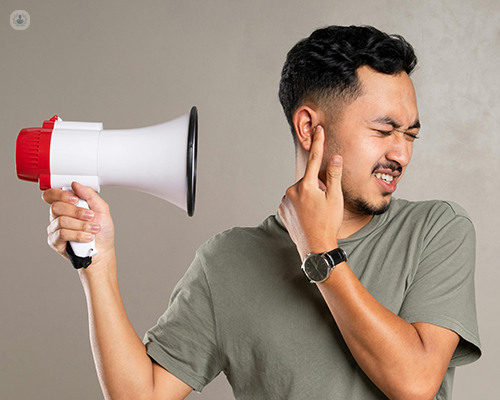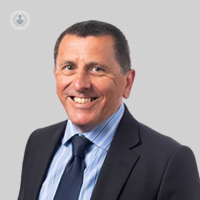Hearing loss: early signs, causes, and how to protect your ears
Written in association with:Hearing loss is when it is difficult to hear or understand speech and other sounds. It is common in the later stages of life, mostly due to the wear and tear of the tiny hair cells in the ear that facilitate hearing and long-term noise exposure, but it can affect people of all ages. In this article, consultant ENT specialist Mr Craig Murray explains how hearing loss occurs, its signs, and tips for prevention.

How do the ears work?
The auditory system goes along the ears until the brain. Sounds enter through the outer ear, to the middle ear where the eardrum and small, vibration-conducting bones called ossicles are located, where they transfer the sound vibrations to the inner ear, to the cochlea in the inner ear, which consists of the aforementioned tiny hair cells that transmit electrical signals to the auditory nerve. The auditory nerve is the bridge between the ears and the brain, connecting to the brain stem, which then transfers the signals into neural impulses so that the temporal lobe can process and attach meaning to the sounds.
What is hearing loss?
People may experience hearing loss as part of the ageing process, but it can also occur due to trauma to the ear (such as a perforated eardrum or fractures to the ear), diabetes or other cardiovascular disease (due to a lack of blood flow to the ears), some medications, earwax impaction, or sound exposure, which can be sudden (such as from a firework right by your ear) or gradual (such a loud working environment or consistently having the volume too loud on headphones).
There are three types of hearing loss:
- Conductive, where the sound cannot go past the outer or middle ear. This is most common with ear wax impaction, ear infections, eardrum perforations, or fluid in the ear.
- Sensorineural, where there is damage to the inner ear that prevents sound from travelling to the brain stem. This is most common with over-exposure to loud noises, age-based hearing loss (presbycusis), head injuries
- Mixed, where there is dysfunction in the middle or outer and the inner ear.
Treatment for hearing loss will depend on the cause of the loss. In some cases, conductive hearing loss is temporary and can be corrected with medication or surgery. Sensorineural hearing loss can be managed with implants and devices like hearing aids and cochlear implants.
What are the signs of hearing loss?
The early signs of hearing loss can be:
- Difficulties hearing or differentiating sounds in busy places
- Difficulties trouble hearing someone more than a metre away
- Difficulties understanding people over the phone or when they are not facing you
- Hearing sounds as though they are muffled, as if people are mumbling or talking through layers
- Needing to play music and television louder than the people around you
- Not noticing when the phone starts ringing or when an alarm goes off
- A persistent buzzing, ringing, or hum in the ears
For children, the signs can be having a slow reaction time to noises (for example, when there is a loud sound or when their name has been called), a garbled, indistinct style of talking as compared to peers or starting to speak later than their peers. They may struggle with school and following instructions due to hearing loss.
How can hearing loss be prevented?
Some cases of hearing loss are permanent, such as presbycusis. To practice good auditory habits and prevent hearing loss over time, it is recommended to protect your ears and mitigate being around loud sources of sound as much as possible.
This can be done by keeping the volume down on devices such as televisions, radios, and music players. Head- and earphone users should keep the volume lower than at most 50% at all times, and the sounds should not be loud enough for others to hear. When in loud spaces or doing loud activities, wearing earmuffs, ear plugs, or noise-cancelling headphones is encouraged. This includes attending concerts, going to music venues, and doing work with construction tools, leaf blowers, or lawnmowers. Take breaks when possible and go outside or move away from the source of sound. It is advised against sticking anything in the ear canal, which can push earwax against the eardrum or perforate the eardrum – and this includes cotton swabs. Maintain good blood circulation and prevent cardiovascular issues by partaking in regular physical activity.
If you are experiencing hearing loss, you can book a consultation with Mr Murray on his Top Doctors profile.


